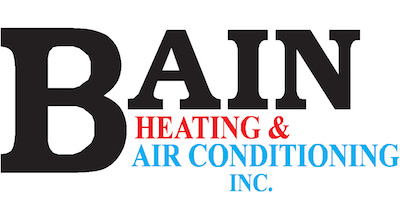
You shouldn’t have to compromise on comfort or spend a lot to keep your house at a pleasant temp during the summer.
But what is the ideal temp, exactly? We review advice from energy professionals so you can select the best setting for your loved ones.
Here’s what we recommend for the most energy-efficient setting for air conditioning in Heflin.
Recommended Thermostat Settings for Summer
Most families find setting the thermostat at 72-73 degrees is ideal. However, if there’s a big difference between your indoor and outdoor temperatures, your electrical costs will be greater.
These are our recommendations based on the U.S. Department of Energy (DOE) and ENERGY STAR®.
While at home: 78 degrees. While that sounds hot, there are methods you can keep your house pleasant without having the AC on frequently.
Keeping windows and curtains shut during the day keeps chilled air where it belongs—within your home. Some window solutions, including honeycomb shades or plantation shutters, are designed to deliver added insulation and better energy conservation.
If you have ceiling fans in your home, the DOE says you can move thermostat settings about 4 degrees hotter without sacrificing comfort. That’s due to the fact they refresh by a windchill effect. Because they cool people, not spaces, shut them off when you exit a room.
If 78 degrees still feels too hot initially, try running an experiment for a week or so. Begin by upping your temperature to 78 degrees while you’re at your house. Then, progressively decrease it while using the suggestions above. You could be astonished at how comfortable you feel at a higher temperature setting.
While away: 88 degrees. There’s no reason to keep the air conditioning on all day while your residence is empty. Moving the temp 7–10 degrees hotter can save you as much as 5–15% on your electricity bills, according to the DOE.
When you come home, don’t be tempted to put your thermostat under 78 to cool your home more quickly. This isn’t useful and typically results in a more expensive electricity expense.
A programmable thermostat is a good method to keep your temp in check, but you have to set programs. If you don’t utilize programs, you run the risk of forgetting to move the set temperature when you leave.
If you’re looking for a hassle-free remedy, think over installing a smart thermostat. This thermostat links with your phone, so it knows when you’re at home and when you’re gone. Then it instinctively changes temperature settings for the biggest savings. How much exactly? Usually $180 each year on heating and cooling, according to ENERGY STAR.
Another plus of using a smart thermostat? You can use your phone to keep an eye on and adjust temperature settings from just about anywhere.
While sleeping: Around 70 degrees. While ENERGY STAR advises 82 degrees, that may be unbearable for most families. Most people sleep better when their sleeping space is chilled, so that’s why the National Sleep Foundation suggests 60–67 degrees. But that could be too cool, due to your PJ and blanket preference.
We suggest using a comparable test over a week, putting your temp higher and steadily decreasing it to choose the ideal temperature for your house. On cool nights, you could discover keeping windows open at night and relying on a ceiling fan is a preferable idea than using the air conditioning.
More Ways to Use Less Energy During Warm Weather
There are additional ways you can save money on energy bills throughout warm weather.
- Buy an energy-efficient air conditioning system. Central air conditioners only are effective for about 12–15 years and become less efficient as they age. An upgraded air conditioner can keep your house comfier while keeping cooling expenses low.
- Schedule yearly air conditioner maintenance. Annual air conditioner maintenance keeps your system working like it should and might help it work more efficiently. It may also help prolong its life cycle, since it helps pros to pinpoint seemingly insignificant issues before they lead to a major meltdown.
- Change air filters frequently. Follow manufacturer instructions for changing your air filter. A clogged filter can result in your system short cycling, or turn on and off too frequently, and increase your electricity.
- Check attic insulation levels. Almost 90% of homes in the United States don’t have enough insulation, according to the Insulation Institute. Most southern climates require 13–14” of attic insulation, while northern climates need 16–18”.
- Have your ductwork checked. Ductwork that has separated over time can let cool air into your attic, walls or crawl space. This can result in huge comfort issues in your home, including hot and cold spots.
- Seal openings, doors and windows. Keep humid air in its place by sealing cracks. You can also caulk or weather strip doors to seal more cold air indoors.
Use Less Energy This Summer with Bain Heating & Air Conditioning
If you need to use less energy this summer, our Bain Heating & Air Conditioning experts can assist you. Give us a call at 256-270-1196 or contact us online for additional details about our energy-saving cooling options.


